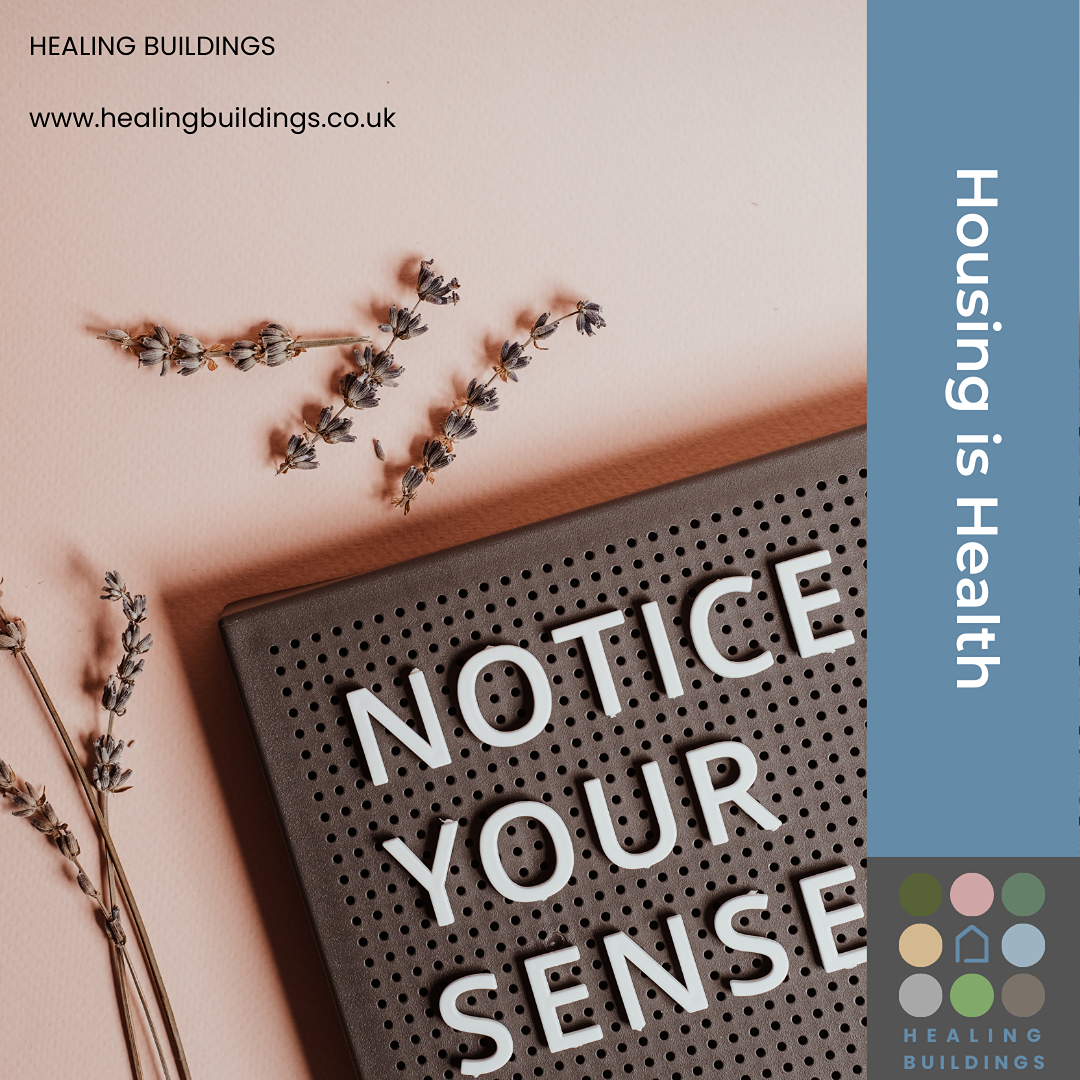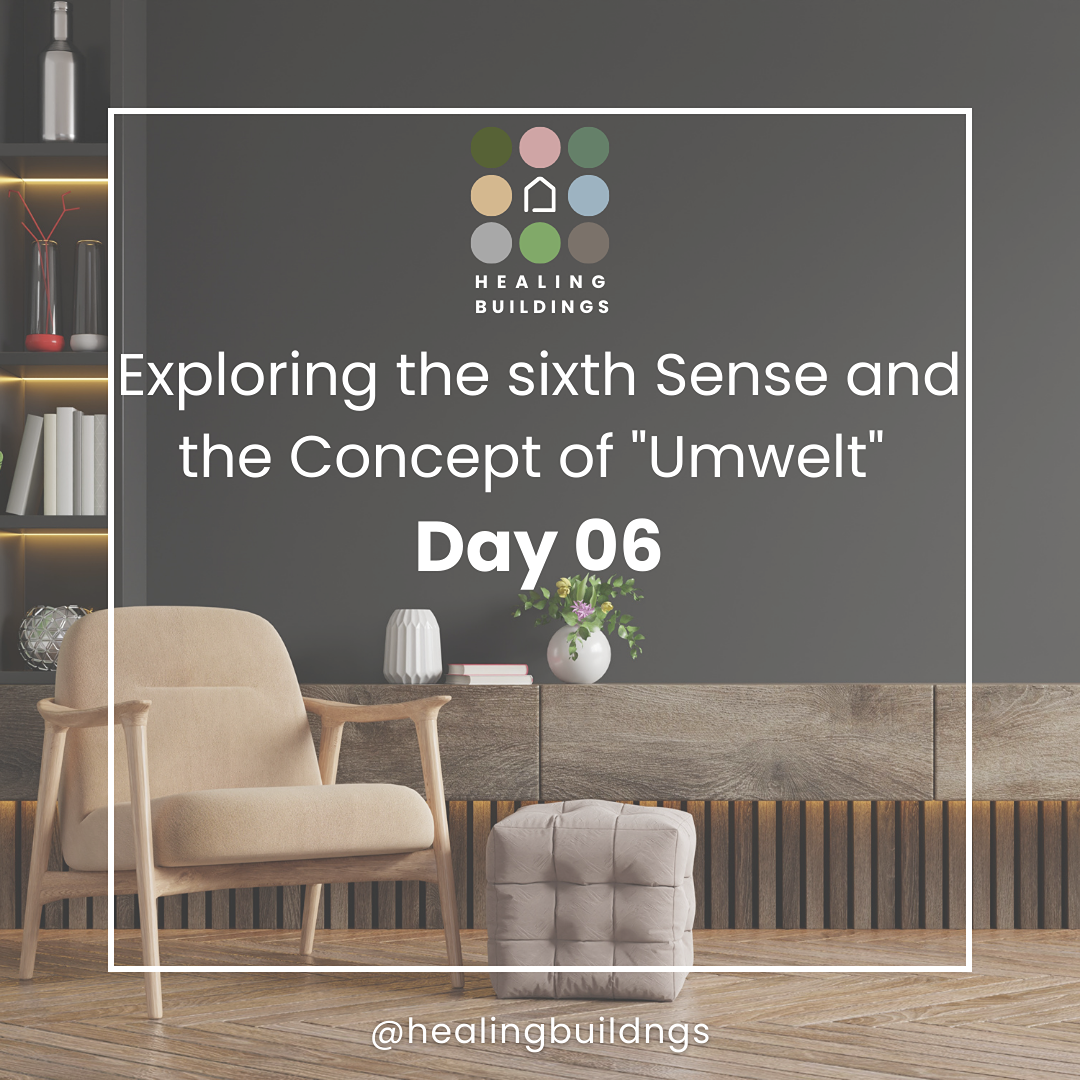January Series: Day 06 Exploring the sixth Sense and the Concept of "Umwelt"

January Series: Day 06
Exploring the sixth Sense and the Concept of "Umwelt"
Our relationship with the spaces we inhabit is deeply personal and shaped by how we perceive the world around us. This perception is influenced by our "umwelt"—a term from biology describing the unique sensory world of an organism, shaped by its individual senses and lived experiences. I know the word from my time living and working in Germany in the late 90s and from the context of climate change.
It came up in the last Zoom Regen presentation I did in October Titled Embracing the Layers of Time in Design when @nicl reminded me of the word and how she was using it within the work she is doing.
On Day 06 of our journey into healing buildings, we’ll explore how these senses. The 5 traditional ones and intution or our sixth senses, define our experience of space and how design choices can either support or disrupt our sense of wellness. We'll also uncover the role of intuition, often seen as a "sixth sense," and how it connects to our built environments. Finally, we'll provide actionable steps—fractals of change—that you can take to align your own home with the principles of healing.
What is Umwelt?
The term umwelt comes from biology and refers to the unique sensory world of an organism—its subjective experience of reality. For example, a bee perceives ultraviolet patterns on flowers that we can’t see, while a dog’s reality revolves around its extraordinary sense of smell.
Humans also have unique umwelts, shaped by individual sensory sensitivities, past experiences, and personal needs. Even if two people stand in the same room, their umwelts might lead them to experience it entirely differently. A brightly lit, minimalistic living room might feel energizing to one person but overwhelming or sterile to someone else.
Most modern design fails to take into account this sensory diversity, often offering “one-size-fits-all” solutions. Yet, when we design spaces that consider varying umwelts, we create environments that feel truly supportive, inclusive, and alive.
Understanding the Senses Through the Lens of Umwelt
1. Sight: Visual Connection to Space
Sight dominates our sensory experience. A poorly lit or visually cluttered space can increase stress, while natural light and organic shapes foster calm and focus. For example, healing spaces like Maggie's Centres emphasize large windows and serene views of nature to enhance well-being.
At Home: Create a calming "visual corner" with plants, soft lighting, and minimal clutter. This space becomes a visual anchor for relaxation.
2. Sound: Shaping Emotional Responses
Sound deeply influences our emotional state. Constant noise pollution can lead to stress and irritability, while soothing sounds promote relaxation. Spaces like the Sound Healing Dome in Portland show how thoughtful acoustics can nurture calm.
At Home: Mask disruptive noises with sound machines, calming playlists, or even a small indoor fountain for a touch of tranquility.
3. Smell: The Power of Scent
Smell evokes strong memories and emotions, often without conscious awareness. Healing spaces like spas use essential oils to create a sense of calm and rejuvenation.
At Home: Use diffusers or candles with natural scents like lavender or eucalyptus. Keep windows open for fresh air circulation.
4. Touch: The Emotional Resonance of Texture
The tactile experience of a space, from soft textiles to smooth wooden finishes, can evoke feelings of comfort and safety. Scandinavian design exemplifies this with its focus on warmth and coziness through natural materials.
At Home: Introduce soft rugs, cozy blankets, or textured pillows. Incorporate natural materials like stone, wood, or clay for an earthy, grounded feel.
5. Taste: Nourishing Design
While taste is not directly tied to architecture, I have in the past joked that I dont expect people to lick buildings..... however, if biological materials have been used, I’d be less worried! The design of spaces where we eat influences our relationship with food. Bright, open kitchens encourage healthy choices and mindful eating. Homes built to minimum standards where there is a dining room on plan but in reality is just a large throughfare between the sitting room and kitchen – then you break the idea of families sharing food, the joy in eating.....
At Home: Dedicate a space for eating that is free from screens, focusing on mindful engagement with meals.
How Intuition Connects to Design
Layered into our umwelt is our intuition—the sixth sense that goes beyond what we consciously see, hear, or feel. Intuition is a deep, internal knowing that often manifests as a gut feeling. You’ve likely experienced this yourself: a space that immediately feels right—or one that feels “off”—without you being able to articulate why.
Our intuition responds to subtle cues in our environment: the layout of a room, the way light filters through a window, or the rhythm of sounds in the background. While these cues may not register consciously, they influence how safe, calm, or inspired we feel in a space.
For example:
A room with poor lighting and cluttered furniture might subtly signal “stress” to our brain, even if it looks visually appealing.
Spaces with natural light, harmonious arrangements, and organic textures often evoke calm and balance, aligning more intuitively with our innate preferences.
By understanding intuition and how it interacts with our senses, we can design spaces that feel not only functional but deeply aligned with our emotional and mental well-being.
Fractal Healing: Small Changes, Big Impact
Healing environments are not limited to grand architectural designs; they begin with small, intentional shifts in your own space. Here is how to incorporate fractal healing into your home:
Sight: Add nature-inspired artwork or plants for a calming visual presence.
Sound: Introduce white noise machines or playlists of soothing sounds.
Smell: Incorporate fresh herbs or essential oils into your environment.
Touch: Use soft, textured fabrics to create a sensory-rich atmosphere.
Taste: Design a space for intentional, distraction-free meals.
Conclusion: Designing for Your Umwelt
Our umwelt—our unique sensory world—is a lens through which we interpret the spaces we inhabit. By recognizing the role of each sense and the ways our intuition connects us to our environment, we can create spaces that support health, healing, and harmony.
Healing buildings don’t have to be elaborate; they can begin with small, thoughtful adjustments that align your home with the principles of wellness. These changes ripple outward, improving not just the aesthetics of a space but also how it feels to live in it. Start with one small fractal of healing today and watch your environment transform into a sanctuary of well-being.

